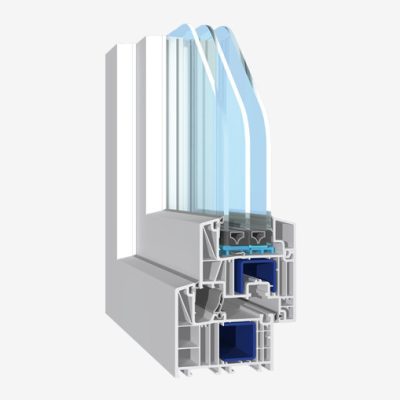Natural stone is a timeless classic that will never go out of fashion. Its elegant effect and high quality enhance the prestige of a room and provide a sense of luxury. Interiors decorated with natural stone are not only beautiful but also functional. However, to avoid high costs, we can resort to using marble conglomerate as an excellent alternative.
Marble conglomerate
This material is made by combining 95% carbonate rock, in this case marble, with 5% binder in the form of epoxy resin. Dyes are sometimes added to give the material the desired appearance or to emphasise the natural colour and texture.
Conglomerate or agglomerate?
The term marble conglomerate is often used interchangeably with agglomerate. However, these materials differ from each other. They are produced in a similar way by combining rock fractions with epoxy resin in the same proportions. The only difference is the granulation of the marble used in the production process. Agglomerate is made from powdered marble, while conglomerate is made from slightly larger grains. This mainly affects the final visual effect.
Characteristics of marble conglomerate
In the production process, the conglomerate takes on the characteristics of the stone from which it is made. Different types of rock have different properties, which is why the characteristics of specific conglomerates will also vary. Marble conglomerate is usually relatively soft compared to quartz conglomerate, for example, and is therefore more susceptible to scratching than quartz products. It is also less resistant to acids and therefore requires special treatment, including special impregnation. Contaminants and substances containing acids or alkalis that remain on the surface for a long time can be particularly harmful to it. Regular use of impregnating agents, which protect the surface of the pure conglomerate, can significantly reduce absorbency. It is also important to remember that due to the sensitivity of marble, hot objects should not be placed on this type of conglomerate. Contact with sharp objects that can leave scratches should also be avoided.
If you want to have marble interior window sills, or ones made of marble conglomerate, this will be an excellent choice. However, it is not recommended to use this material outdoors, as weather conditions can cause discolouration, fading and tarnishing of the conglomerate surface.
Read also:
Marble conglomerate window sills
Natural marble has several disadvantages, such as its relatively high water absorption and sensitivity to scratching. Marble conglomerates bonded with resin have these disadvantages significantly reduced. This is one of the reasons why window sills made of this material are extremely popular. It is also important that they are much cheaper than marble.
Marble agglomerates are often imported from Italy, the home of the most beautiful marbles. It is often the concern of manufacturers that window sills made of agglomerates are as similar as possible to the original. Therefore, compositions are created that refer to marble stones from specific deposits with their pattern. We can therefore find window sills made of marble conglomerate called Breccia or Calacatta. In addition to these, there are many designs with names derived from Italy, but representing compositions imitating natural stone. Marble agglomerates can also be slightly coloured to achieve an innovative decorative effect. Thanks to these techniques, the range of marble agglomerate window sills is not limited to the traditionally light cream shades, but also includes beige and browns, as well as shades of grey, navy blue and green. It can be successfully matched to any type of window, and the high aesthetics make such a window sill an elegant element of interior decoration.
Read also:



